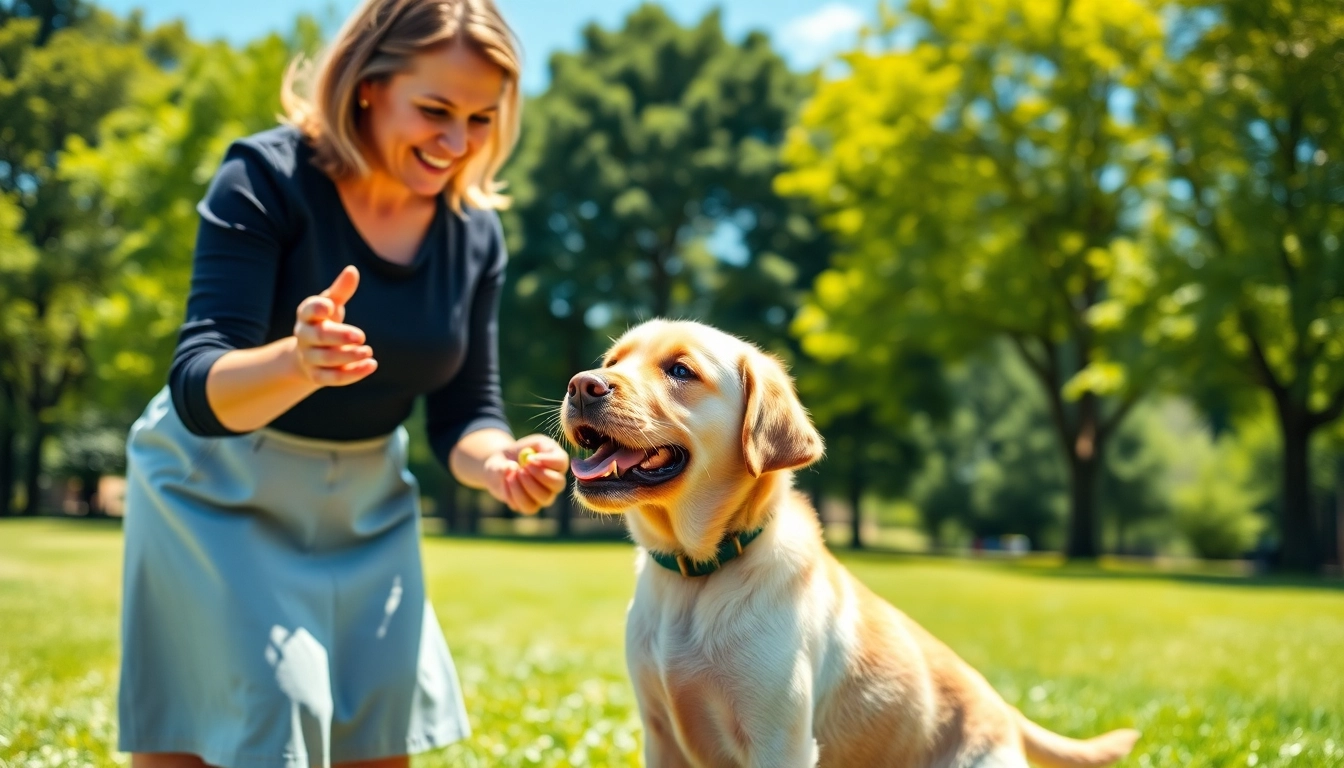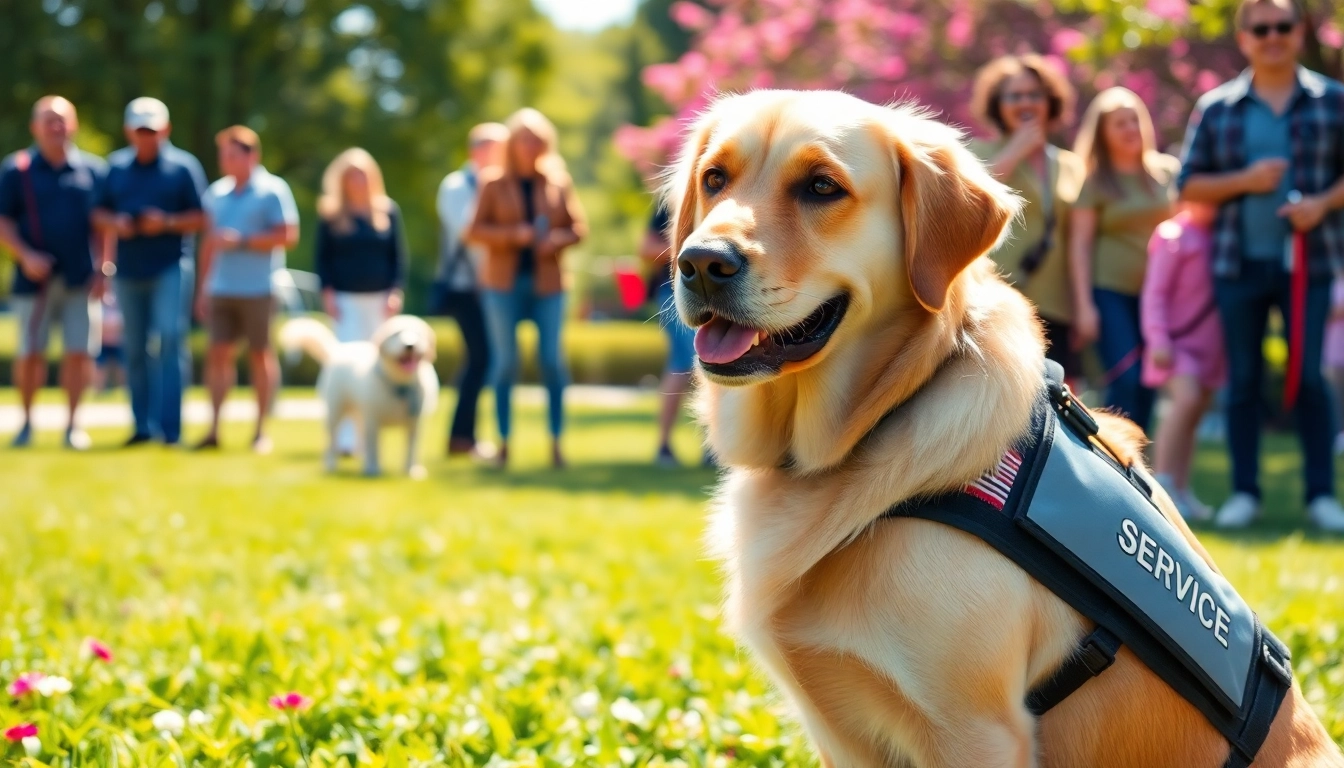Understanding Dog Training in Irvine
Dog training plays a pivotal role in building a harmonious relationship between pets and their owners. Whether you’re a new dog owner or looking to refine your pet’s behaviors, understanding the nuances of Dog Training Irvine can significantly enhance the training experience. This article delves into the significance of dog training, the various methods available, and expert insights to navigate training challenges effectively.
What is Dog Training?
Dog training refers to the process of teaching a dog specific behaviors in response to certain commands or signals, effectively communicating with the animal. It encompasses a wide array of skills ranging from basic obedience, such as “sit” and “stay,” to more complex routines tailored for working dogs. Training can be administered through various techniques and methodologies, each focusing on developing the canine’s abilities while fostering a positive bond with the owner.
The Importance of Training for Pets
Comprehensive dog training is essential for several reasons:
- Improved Behavior: Well-trained dogs are less likely to display undesirable behaviors, which can disrupt household harmony.
- Safety: Training equips dogs with the necessary skills to respond appropriately in various situations, reducing the risk of accidents.
- Socialization: Proper training helps dogs learn how to interact with other pets and people, leading to well-adjusted companions.
- Enhanced Communication: Training encourages better understanding between the dog and the owner, creating a stronger bond.
Types of Dog Training Available in Irvine
Irvine offers a diverse range of dog training options catering to different needs and learning styles:
- Obedience Training: Basic commands like sit, stay, and come form the foundation of respectful behavior.
- Behavior Modification: Techniques designed to address specific behavioral issues, such as aggression or separation anxiety.
- Puppy Training: Early socialization and basic commands crucial for developing a well-rounded dog.
- Agility Training: For owners looking to engage their dogs physically and mentally through obstacle courses.
- Service Dog Training: Specialized programs training dogs to assist individuals with disabilities.
Positive Reinforcement Methods
What is Positive Reinforcement?
Positive reinforcement is a training approach that involves rewarding desired behaviors to increase the likelihood of their occurrence in the future. This technique encourages dogs to repeat behaviors that result in rewards, rather than employing corrective measures that may instill fear or anxiety.
Benefits of Positive Reinforcement in Dog Training Irvine
This method offers numerous benefits, particularly in a community-oriented environment like Irvine:
- Creates a Positive Learning Environment: Dogs trained with positive reinforcement feel more secure and motivated to learn.
- Strengthens the Bond: Reward systems deepen the relationship between the dog and owner, fostering trust.
- Reduces Fear-based Behaviors: Avoiding harsh corrections minimizes anxiety and fear, resulting in a more balanced pet.
Common Techniques to Implement
There are several practical techniques for applying positive reinforcement effectively:
- Clicker Training: Using a clicker to mark desired behaviors followed by a reward reinforces learning.
- Treat Rewards: Offering treats and praise when a dog performs correctly helps solidify the behavior.
- Play as a Reward: Engaging in a favorite game can be a powerful incentive for dogs, particularly energetic breeds.
Choosing the Right Dog Trainer in Irvine
Qualities to Look For in a Trainer
Selecting the right trainer is crucial for successful dog training. Here are some attributes to consider:
- Certification and Experience: Look for trainers who are certified and have a proven track record of success.
- Training Methods: Ensure their training philosophy aligns with positive reinforcement techniques.
- Communication Skills: A good trainer should be able to convey concepts clearly to both the dog and owner.
- Empathy and Patience: Training requires time; a trainer should exhibit understanding towards both dogs and owners.
Top Dog Trainers in the Irvine Area
Several reputable dog trainers in Irvine, each offering unique programs and specialties:
- Manners for Mutts: Specializes in positive reinforcement with a range of classes for all skill levels.
- Paw Sweet Paw: Offers flexible programs, focusing on personalized training plans.
- Wags & Wiggles: Provides group classes and private sessions tailored to different needs.
- Good Dog OC: Offers both basic and advanced training, including behavior modification programs.
Evaluating Training Programs and Methods
It’s important to assess training programs critically:
- Trial Classes: Many trainers offer trial classes; these sessions can help assess compatibility.
- Feedback from Previous Clients: Reviews and testimonials can provide insight into the trainer’s approach and results.
- Observe Training in Action: Watching a trainer interact with dogs can showcase their methodology and effectiveness.
Common Challenges in Dog Training
Dealing with Behavioral Issues
Many owners face behavioral challenges. Recognizing common issues can facilitate a more effective training approach:
- Excessive Barking: Training to respond to specific triggers rather than barking can be established through cues.
- Potty Training: Consistent schedules and rewards are key to establishing good habits.
- Digging: Identifying causes (boredom, stress) and redirecting energy can be effective strategies.
Addressing Aggression and Anxiety
Behavioral issues such as aggression or anxiety require specialized attention:
- Consulting Professionals: In severe cases, professional behaviorists may be necessary to tailor a specific plan.
- Desensitization Techniques: Gradual exposure to stressors can help dogs gain confidence and reduce anxiety.
- Creating Safe Spaces: Providing dogs with a secure area can help minimize stress and encourage relaxation.
Training Tips for Difficult Dogs
Every dog is unique, and some might present training challenges:
- Be Consistent: Consistency in commands and routines boosts understanding and compliance.
- Stay Calm: Approaching challenges with a calm demeanor can influence the dog’s response positively.
- Break Tasks into Smaller Steps: Chunking tasks can prevent overwhelming the dog, enhancing focus and success.
Measuring Training Success
Setting Goals and Expectations
Establishing clear, achievable goals is fundamental in evaluating training efficacy:
- Short-term vs. Long-term Goals: Set smaller milestones leading to larger objectives to keep motivation high.
- Realistic Benchmarks: Expectations should align with the individual dog’s capabilities and temperament.
- Documentation: Keeping a journal of progress can offer tangible insights into the dog’s development.
Using Training Tools and Resources
Utilizing various tools can enhance the effectiveness of training:
- Training Aids: Items such as clickers, leashes, and treat bags can augment training sessions.
- Online Courses: Many platforms offer valuable resources; exploring these can provide additional strategies and insights.
- Books and Guides: Reading up on training techniques tailored to specific issues can introduce new methods.
Evaluating Progress Over Time
Regular assessments are crucial to measure how well training is going:
- Behavior Tracking: Take note of recurring behaviors—successes and setbacks are both part of the journey.
- Milestone Celebrations: Acknowledge significant progress to maintain motivation and positivity in training.
- Adjusting Techniques: Be open to modifying approaches based on what works best for the dog over time.



